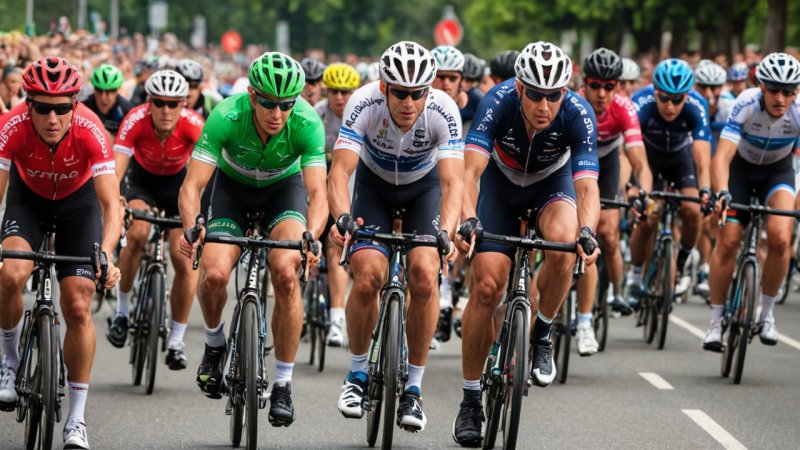Cycling is a sport that offers a unique blend of physical challenge, personal achievement, and the thrill of competition. However, with a plethora of events available, it can be daunting for cyclists, especially beginners, to determine which events align with their skill level. Whether you are a novice cyclist looking to dip your toes into the world of competitive cycling or an experienced rider aiming to push your limits, understanding how to select the right cycling events can significantly enhance your experience and performance. This guide will equip you with the knowledge to make informed choices that not only ensure your safety but also allow you to thrive in your cycling journey.
Understanding Your Skill Level
The first step in choosing the right cycling events is a clear assessment of your current skill level. Cyclists can generally be categorized into three main skill levels: beginner, intermediate, and advanced. Beginners are those who are relatively new to cycling, may have limited experience in group rides, and are still mastering basic bike handling skills. Intermediate cyclists have a solid foundation, can handle longer rides, and are familiar with the mechanics of cycling. Advanced cyclists possess extensive experience, can tackle challenging terrains, and often compete regularly.
Self-Assessment Techniques
To accurately gauge your skill level, consider the following self-assessment techniques:
- Ride Duration: Reflect on how long you can comfortably ride. Beginners may struggle with rides longer than 10 miles, while intermediate cyclists can manage 20-40 miles, and advanced cyclists often exceed 50 miles.
- Speed and Endurance: Track your average speed. Beginners may average around 10-12 mph, while intermediate riders can manage 12-16 mph, and advanced cyclists often exceed 16 mph.
- Terrain Familiarity: Assess your comfort level with different terrains. Beginners should stick to flat, paved surfaces, while intermediate and advanced cyclists may handle hills, gravel, and more technical trails.
Types of Cycling Events
Once you have assessed your skill level, the next step is to explore the various types of cycling events available. Understanding the nature of each event can help you find the right fit.
Road Races
Road races are a staple in the cycling community and can vary in distance and difficulty. These events usually take place on paved roads and can range from short sprints to long-distance races. Beginners may want to consider participating in community rides or shorter distances, while intermediate and advanced cyclists can tackle state or national level races.
Mountain Biking
Mountain biking events are designed for cyclists who enjoy riding off-road. These events often involve navigating trails with varying degrees of difficulty, including steep climbs and technical descents. Beginners should look for events that are labeled as ‘beginner-friendly’ and avoid overly technical courses until they gain more experience.
Cyclo-Cross
Cyclo-cross combines elements of road cycling and mountain biking, typically featuring a mix of surfaces, including dirt, grass, and pavement. Events often involve obstacles that require riders to dismount and carry their bikes. This style is suitable for intermediate to advanced riders who are looking for a unique challenge.
Gran Fondos and Sportives
Gran Fondos and sportives are long-distance rides that are not necessarily competitive but may include timed sections. These events are excellent for cyclists looking to challenge themselves over long distances without the pressure of racing against others. Beginners can start with shorter gran fondos and gradually work their way up.
Event Selection Criteria
When selecting an event, it's essential to consider several factors that will influence your experience:
Distance and Duration
Choose a distance that matches your current endurance level. Consider participating in events that offer multiple distance options to gradually build up your stamina.
Location and Terrain
The location and terrain of the event are crucial. Familiarize yourself with the route and ensure that the terrain is suitable for your skill level. Events on familiar roads or trails may provide a more comfortable experience.
Event Format
Understanding the format of the event is vital. Some events may be mass starts, while others may have staggered starts. Check if the event allows for team participation, as riding with others can enhance your experience.
Preparing for Your Selected Event
Preparation is key to ensuring a successful cycling event experience. Here are some important tips:
Training Plan
Develop a training plan tailored to your selected event. Incorporate distance rides, interval training, and recovery days. Ensure your training matches the terrain and distance of the event.
Equipment Check
Ensure your bike is in good condition and that you have the appropriate gear, including helmets and protective equipment. Familiarize yourself with your bike and practice any necessary skills.
Nutrition and Hydration
Proper nutrition and hydration are critical components of performance. Plan your meals before the event and ensure you are adequately hydrated leading up to race day.
Conclusion
Choosing the right cycling event for your skill level is a crucial decision that can set the tone for your cycling experience. By assessing your skills, understanding the types of events available, and preparing adequately, you can enhance your performance while ensuring your safety. Remember that cycling is not just about competition; it’s about enjoyment, growth, and the journey you embark on as you pedal your way through life. Embrace the process, and choose events that inspire you to challenge yourself and enjoy the ride.






